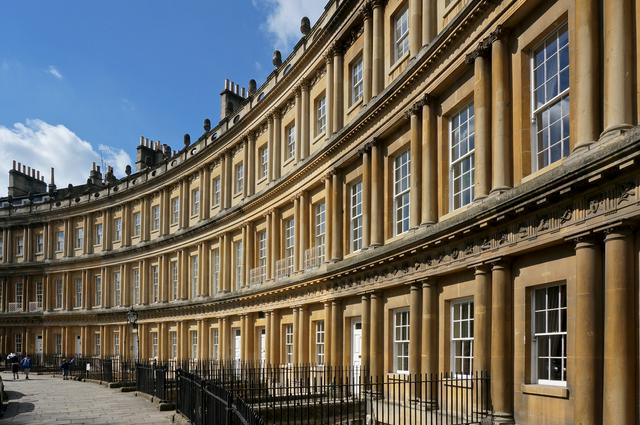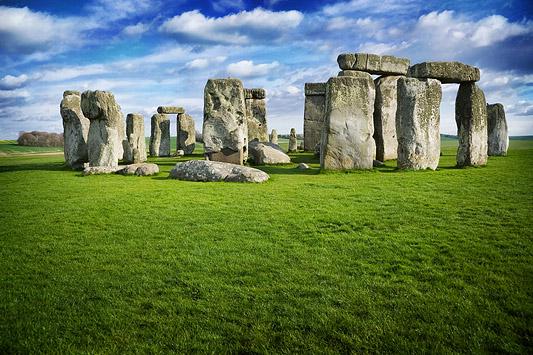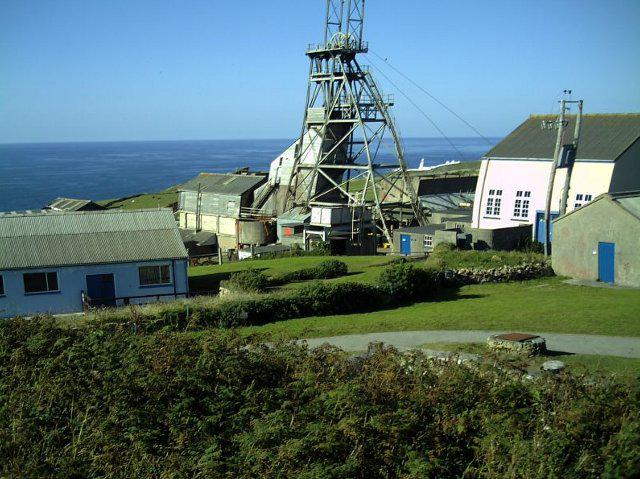The West Country is an unofficial, but popular, name for the South West of England. If you think you know southern England, but haven't ventured beyond the South East, the West Country will be a revelation. It is at once more rural and prettier than its crowded neighbour, offering extensive countryside of hills, forest and moorland, hemmed in on three sides by the sea. From the sandy beaches of Dorset, to the creeks and inlets of Devon, via Somerset's high cliffs and Cornwall's secluded coves, the South West Coast is as diverse as it is long. Large cities are few and far between, but for the cream of the crop, head to vibrant Bristol, beachy Bournemouth or charming Bath.
In addition to city, countryside and coast, the West Country hosts some of the UK's best-known attractions. While no trip to the region would be complete without a visit to Stonehenge, other landmarks include Cheddar Gorge in Somerset and the Eden Project in Cornwall. The region's fauna is impressive. A trip out to sea may permit sightings of whales, dolphins and basking sharks; inland you can seek out England's only wild beavers, plus river otters and kingfishers in Devon, rare butterflies and great bustards in Wiltshire's meadows and reintroduced wild boar in Gloucestershire.
The following counties are generally considered to form the West Country:

- Bath. (Somerset) – From the Roman Empire to the Regency period, Bath was Britain's premier spa town. Now you can admire its awesome architecture and 2000-year history
- Bournemouth. (Dorset) – a sandy beach resort popular with all ages. Here, the UK's greatest concentration of retirement homes rub shoulders with the south west coast's best nightlife
- Bristol. – Once a bustling medieval port, the South West's biggest city is both fashionable and colourful, while enjoying interesting topography and a world-famous bridge
- Exeter. (Devon) – Devon's county town is blessed with a stunning cathedral and an enviable location between Dartmoor and the sea
- Gloucester. (Gloucestershire) – The UK's furthest inland port on its longest river; yet another cathedral city with Roman and Medieval credentials
- Plymouth. (Devon) – The "Spirit of Discovery" invites you to the place where the pilgrims of the Mayflower set sail for the New World
- Salisbury. (Wiltshire) – "New Sarum" boasts England's tallest cathedral spire, a magnificent structure that evokes the great churches of the Continent
- Truro. (Cornwall) – Cornwall's compact and pretty capital sits at the heart of the Duchy. Its narrow streets make it pedestrian-friendly and easily walkable
- Wells. (Somerset) – More of a large village than a city, Wells' gorgeousness packs a punch far greater than its size. This most English of settlements surrounds a justifiably famous cathedral
Bath. ([[Somerset (England)|Somerset]]) – From the Roman Empire to the Regency period, Bath was Britain's premier spa town. Now you can admire its awesome architecture and 2000-year history
Bournemouth. ([[Dorset]]) – a sandy beach resort popular with all ages. Here, the UK's greatest concentration of retirement homes rub shoulders with the south west coast's best nightlife
Bristol. – Once a bustling medieval port, the South West's biggest city is both fashionable and colourful, while enjoying interesting topography and a world-famous bridge
Exeter. ([[Devon]]) – Devon's county town is blessed with a stunning cathedral and an enviable location between Dartmoor and the sea
Gloucester. ([[Gloucestershire]]) – The UK's furthest inland port on its longest river; yet another cathedral city with Roman and Medieval credentials
Plymouth. ([[Devon]]) – The "Spirit of Discovery" invites you to the place where the pilgrims of the Mayflower set sail for the New World
Salisbury. ([[Wiltshire]]) – "New Sarum" boasts England's tallest cathedral spire, a magnificent structure that evokes the great churches of the Continent
Truro. ([[Cornwall]]) – Cornwall's compact and pretty capital sits at the heart of the Duchy. Its narrow streets make it pedestrian-friendly and easily walkable
Wells. ([[Somerset (England)|Somerset]]) – More of a large village than a city, Wells' gorgeousness packs a punch far greater than its size. This most English of settlements surrounds a justifiably famous cathedral

- Stonehenge. – The most famous prehistoric standing stones in the world and a joint World Heritage site with nearby Avebury.
- The Forest of Dean. – The "Queen of Forests", one of England's few remaining ancient forests.
- Dartmoor. and Exmoor. National Parks
- Isles of Scilly. – A glorious set of islands out in the Atlantic. One of Britain's best kept secrets.
- Land's End. - Where Cornwall tumbles into the Ocean.
- Lundy. - A rugged and very scenic island off the north Devon coast.
- The White Horses of Wiltshire - white horses created by removing the grass on hills to reveal the white chalk underneath. Most are a few hundred years old, although the Uffington White Horse. is at least 3,000 years old.
- The Jurassic Coast. in Dorset and East Devon is designated a World Heritage site.
The itinerary article Prehistoric Wessex Trail suggests a route through much of the region.
Stonehenge. – The most famous prehistoric standing stones in the world and a joint [[UNESCO World Heritage List|World Heritage]] site with nearby [[Avebury]].
The Forest of Dean. – The "Queen of Forests", one of England's few remaining ancient forests.
Dartmoor. and Exmoor. National Parks
Dartmoor. and Exmoor. National Parks
Isles of Scilly. – A glorious set of islands out in the Atlantic. One of Britain's best kept secrets.
Land's End. - Where Cornwall tumbles into the Ocean.
Lundy. - A rugged and very scenic island off the north Devon coast.
The White Horses of Wiltshire - white horses created by removing the grass on hills to reveal the white chalk underneath. Most are a few hundred years old, although the Uffington White Horse. is at least 3,000 years old.
The Jurassic Coast. in Dorset and East Devon is designated a [[UNESCO World Heritage List|World Heritage]] site.
The exact boundary of the West Country is unclear and often a source of heated debate between the different counties, many of which have strong identities. What can be said is that it is an area that shares many interesting cultural similarities. Most noticeably the accents and dialects. Most of the West Country once formed part of the ancient kingdom of Wessex and Wessex remains to this day a cultural region which locals identify with. The people of Cornwall sometimes consider themselves separate from both the West Country and England, due to their ancient Celtic heritage.
West Country dialects can vary but share many similarities, most noticeably the strong rhotic pronunciation, often stereotyped as rural or pirate speech. These dialects can also be found in neighbouring counties, but are more uncommon due to the influence of large population shifts out of London.
West Country people are widely seen as warm, welcoming, forgiving and easy going folk and certainly this reputation has helped enhance the tourist industry. Other aspects of the culture include an almost religious obsession with rough farm produced scrumpy cider. Many folk songs about the juice of the apple are widely known and will be readily performed by local musicians, in a style jokingly referred to as "Scrumpy & Western".
West Country people are often portrayed in the British media as simple country folk, however be aware that people are not comfortable with this London centric view and might well find such comparisons extremely offensive.

- Stonehenge, One of the world's most famous prehistoric monuments, located in the county of Wiltshire.
- Roman Baths in Bath, a Roman spa complex constructed on hot springs and now a museum.
- The Cornwall and West Devon Mining Landscape — a UNESCO World Heritage site
[[Stonehenge]], One of the world's most famous prehistoric monuments, located in the county of Wiltshire.
[[Bath|Roman Baths in Bath]], a Roman spa complex constructed on hot springs and now a museum.
The South West with its long coastline is a haven for tourists and so many tourist attractions can be found here. Eastern Dorset has a number of popular seaside resorts, the biggest of which is Bournemouth. The 'Jurassic Coast' (so named for the abundant dinosaur and prehistoric fossils found along the beaches) runs through western Dorset and eastern Devon. The Cornish coast is famous for its mining heritage, fishing villages and surfing beaches. One of the most popular attractions is the Eden Project in Cornwall
Dartmoor and Exmoor national parks are popular for outdoor activities including hiking, climbing, mountain biking and pony trekking.
Other attractions include Crealy Great Adventure Parks which are two theme parks in Devon and Cornwall.
Local specialties include:
- Clotted cream - perhaps as part of a clotted cream tea is particular popular in Devon and Cornwall.
- Cheddar cheese - popular cheese named after Cheddar, Somerset.
- Cornish pasty - regional food of Cornwall.
- Tewkesbury mustard - mustard named after Tewkesbury, Gloucestershire.
The region is most famous for production of farmhouse cider (nationally known as a "scrumpy"). This is generally assumed to be alcoholic (and frequently much stronger than supermarket cider!) and apple-based, although perry from pears and ciders from other fruits are also produced.
The rural West Country is generally an extremely safe area with low crime rates - the sort of place where locals may leave houses unlocked, although of course this is not advised; and as usual, towns and cities should be treated with more vigilance.
Perhaps the biggest potential danger for a visitor is on the country roads, which are frequently narrow, with very poor visibility as they wind between high hedges, and always the risk of a tractor, horse rider or cyclist around the next corner. Drive carefully!
In addition, the highlands of Dartmoor, Exmoor etc can be very exposed to bad weather, so although they are not particularly mountainous in sheer height or relief, they should be treated with similar respect. Similarly, all usual respect should be paid to coastline safety as the sea can be rough and many opportunities exist for getting cut off by the tide.
- London is about two hour's drive from Bristol
- Swansea and the Gower Peninsula are around 90 minutes from Bristol.
